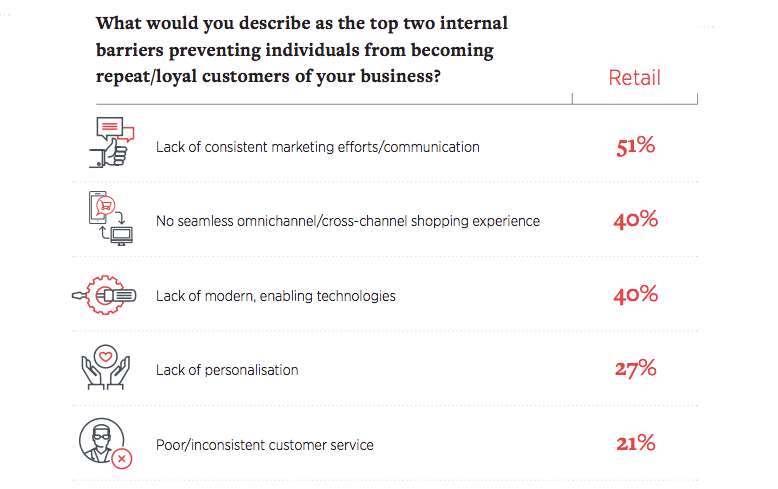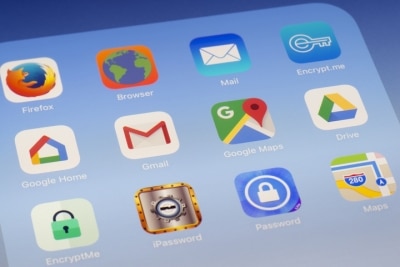Article
The Top 5 Reasons You Don’t Have Repeat Customers
June 12, 2018

Loyal customers are the most valuable customers. Our most iconic brands are known for cultivating long-standing relationships and creating the ever-valued “tribe” of repeat customers, who become enthusiasts and advocates. Its why we still line up at the Apple Store for a launch, why there are two or three brand names that dominate our closet, why our coffee comes from Starbucks, Dunkin’ Donuts or McDonald’s (never and, always or).
What then, prevents shoppers from becoming loyal customers? Why are only 20% of customers – and often, far fewer – the ones who generate the revenue? We asked 300 retail and media executives a variation on this question in a study conducted with Forbes Insights. Our goal was to discover how they approach customer retention and how they leverage it throughout their enterprises.
We asked them: What are the top 2 internal barriers that prevent people from becoming repeat customers of your business?
The answers were sobering.
Three out of five answers: “Internal disarray”
Three of the most-common reasons that customers don’t come back have everything to do with a company’s organization, leadership and management.
- The most frequently-cited internal barrier to customer loyalty was “lack of consistent marketing efforts and communication,” chosen by 51% of respondents. Yes, that can be a technology problem. Marketers can’t always have the ability to easily see which customers have been contacted through which channels or the ability to coordinate campaigns (with or without any level of personalization). But often it’s a leadership, organizational design and data strategy challenge. The one hand (traditional marketing) doesn’t know what the other (digital marketing) is doing.
- Forty percent of marketing executives cited lack of modern, enabling technologies as a reason they don’t have many repeat customers. That’s likely another sign of internal confusion.
- The third, equally dismaying reason that marketers believe customers don’t return to shop with them repeatedly is “poor/inconsistent customer service.” Again, that’s all about internal management, or the lack of it.

Two out of five answers: Technology
Front-line marketers absolutely understand the value of modern technology. However, our research found that they often have difficulty translating that conviction to those higher up in management.
- Forty percent of retailers struggle with repeat customers due to a lack of seamless, omnichannel shopping experiences. And, of course, that’s something that an investment in the appropriate technologies alongside changes in operations can provide. The tough part is that at least 40% of marketers know they need a seamless, omnichannel shopping experience. But they still struggle with persuading their organizations to adopt this pillar of modern digital marketing. Given the size of the initiative, many most likely don’t know where to start.
- Lack of personalization, chosen by 27% as a reason customers don’t become more loyal, presents similar issues. Investment in technology can allow personalization, and even small steps along the road to personalization can make a big difference. Given the importance of data in personalization, this barrier might speak as much to technology challenges as it does to data governance. If marketing doesn’t have a stake in customer data ownership, that data goes unused as a resource.
These conundrums illustrate why we always advise clients to start by identifying their goals and then work backwards from there. When everything is a priority, nothing gets accomplished. As budgets shift in terms of technology buying power, marketing must have a seat at the table. This is especially important when it comes to operations around the customer experience, managing data and developing the insights necessary to reset goals.
Until marketers prioritize long-term profitability over short-term conversion, the conversations necessary to overcome these barriers will stay in the minds, rather than become matter.
The State of Brand Loyalty in the U.S. in 2023
Related



